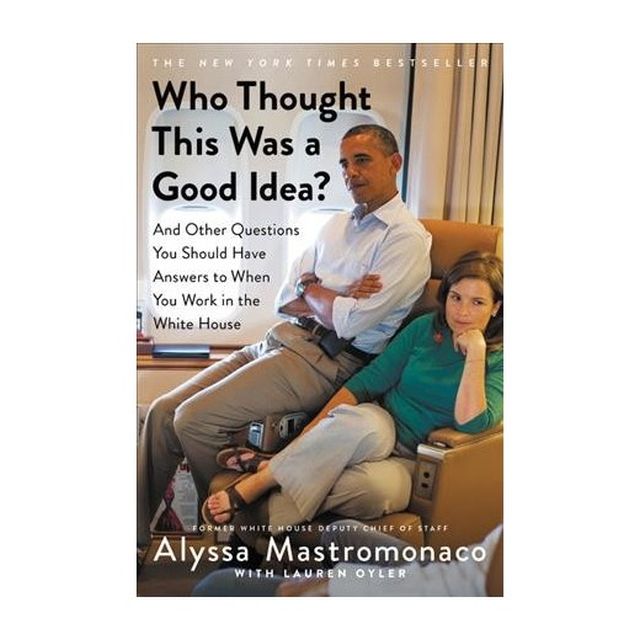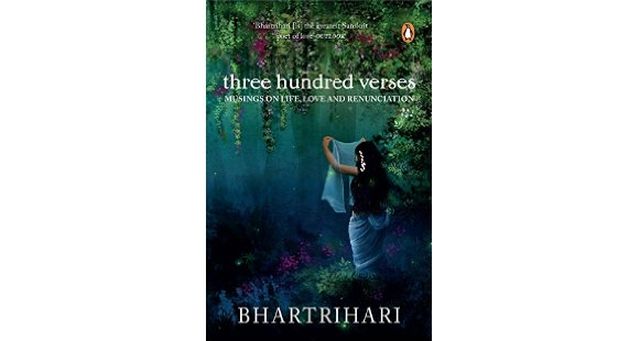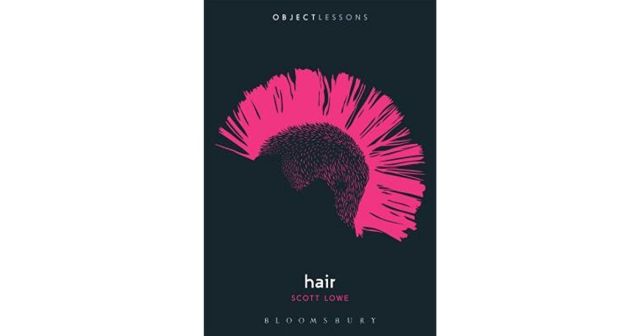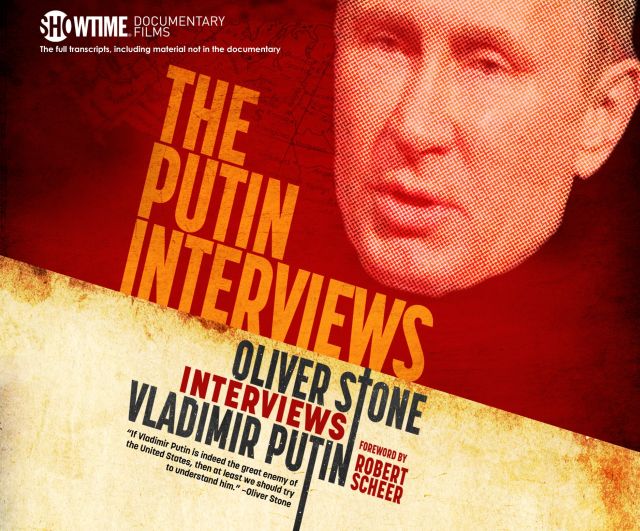
by admin | May 25, 2021 | Books
 By Saket Suman,
By Saket Suman,
Title: Who Thought This Was a Good Idea; Author: Alyssa Mastromonaco; Publisher: Hachette; Price: Rs 499; Pages: 244
The unusual title of this book is inspired by a question which former US President Barack Obama frequently asked the author while she was serving as the White House Deputy Chief of Staff and the cover shows Obama sitting with the author inside Air Force One. In short, it has all that is required to attract eyeballs. But don’t judge a book by its cover.
Mastromonaco worked for Obama for almost a decade — and long before his run for President. From the then-Senator’s early days in Congress to his years in the Oval Office, she was a constant companion.
At first glance, the book appears more like a memoir and readers may be tempted to buy a copy just the anecdotes around the former President. But this expectation is belied as the author calls it an “advice book/memoir geared towards women between the ages of about 15-25”. Nonetheless, Mastromonaco has some good lessons in store for her readers.
It is a journey through some challenging phases of Obama’s presidency and, through the events that unfolded at those times, the author leaves behind her lessons for the readers. Described in vivid detail and anecdotal tone are accounts ranging from the tension when Hurricanes Katrina and Sandy or the Haitian earthquake struck to the riveting details on the lead-up to Obama’s inauguration.
Mastromonaco keeps her target readers in mind and makes it a point to mention every small detail that may serve as a lesson for young women — including how she got her period at a state dinner or suffered from diarrhoea at the Vatican.
Like a child, she expresses her excitement at visiting Buckingham Palace and shares insights into little troubles that she faced while moving house. She also mentions several instances of her feeling sick on a helicopter. It is through these little experiences that she reminds her readers that even people at the height of their success are faced with common problems like common people.
“I also wanted to write this book because I didn’t see anything like it out there. When I was trying, kind of desperately, to get a job in politics, and then once I got one, all my mentors were men. Most political memoirs are written by men — because most of the people who work in politics are men,” she writes.
The stories about the White House with Obama are wild and hilarious, overwhelming for the reader on many occasions. Obama is largely a well-respected man among common people in the US and abroad but Mastromonaco reminds us — through many anecdotes and personal experiences — that Obama is a legitimately thoughtful, caring and wonderful human being. The extraordinary amount of respect that Obama’s staff had for the President, the author points out in the book, is sorely missing from Trump’s White House.
The book is easy to read but does not follow a chronological order which is a bit confusing at times. Mastromonaco’s main aim is to reach out to young women who have a fiery desire and passion to enter politics. If you are curious about anything in the world of politics, you will enjoy this book.
(Saket Suman can be contacted at saket.s@ians.in)
—IANS

by admin | May 25, 2021 | Books
 By Brajendra Nath Singh,
By Brajendra Nath Singh,
Title: How the BJP Wins; Author: Prashant Jha; Publisher: Juggernaut Books; Pages: 235; Price: Rs 399
Barring a hic-cup or two, the Bharatiya Janata Party (BJP), under the leadership of Prime Minister Narendra Modi and party chief Amit Shah, has been winning election after election since its 2014 Lok Sabha poll win.
Here is a book that takes you through the saffron party’s victory path, illustrating how the blend of Modi’s charisma and Shah’s organisational skills, coupled with their political willingness to sharpen the Hindu-Muslim divide, have seen the BJP home — most recently with a thumping win in the Uttar Pradesh assembly elections.
“How The BJP Wins”, authored by senior journalsit Prashant Jha, also focuses on how the party has succeeded in consolidating the Hindu vote beyond its traditional upper caste vote bank.
“Anyone who sees the BJP as an upper caste party is living in the past. The BJP is becoming an inclusive Hindu party, winning the support of various communities, including the subaltern, which inhibit the broad Hindu fold,” says the book.
It is a must read for the new generation of leaders across ideologies and also for all the parties opposed to the BJP to understand its strategy of election victories. It will also be helpful for those keen on understanding contemporary Indian politics.
In the 2014 Lok Sabha polls, the BJP won 282 of the 428 seats it contested and, with the help of allies, formed a government with two-thirds majority. It was also the first time in the 67-year history of independent India that a non-Congress party won a simple majority on its own.
After the historic victory, the BJP won assembly elections in Haryana, Jharkhand, Maharashtra, Assam, Jammu and Kashmir, Manipur and Uttar Pradesh.
In Haryana, Assam and Uttar Pradesh, the BJP formed governments on its own while in Jammu and Kashmir it tasted power for the first time with the state’s Peoples Democratic Party. In Manipur also, the party formed its government with the help of some junior allies.
However, the BJP lost heavily in Delhi in 2015 against Arvind Kejriwal-led Aam Aadmi Party and in Bihar against Nitish Kumar-led Grand Alliance of Janata Dal-United, Rashtriya Janata Dal and Congress. That it managed to break the alliance and formed the government with Nitish Kumar is a different story.
The book describes in detail how the BJP transformed itself into a more inclusive Hindu party, open to all castes, which led to its victory in Uttar Pradesh — despite the risky decision of demonetisation.
“In recent Indian economic history, no move has been as disruptive to the eveyday lives of ordinary citizens as demonetisation. No move has caused job losses or logistical inconvinience to such a degree. Yet, there was palpable enthusiasm for the move.
“From the expectation that the move would clean the economy to the pleasure at assuming that the well-to-do were suffering more, from hopes that the additional resources would be transferred to the poor to the desire for a more equal society, a range of motivations drove the support.
“Over subsequent months, this enthusiasm slowly dissipated, but it never translated into outright hostility,” says the book.
Dedicating a chapter to the future of the BJP, the book explains how “Modi’s mass charisma and Shah’s tremendous organisational skills together laid the foundations for the new BJP in the middle of its most ambitious experiment of social engineering”.
The book notes that apart from these two main factors, the Rashtriya Swayamsevak Sangh (RSS) — the BJP’s mentor — supplemented and contributed to its phenomenal success.
“How the BJP acquires power is now clear. But winning is easier than ruling. How the BJP uses the political power it has acquired so successfully will determine whether Modi’s dream of a ‘New India’ is fulfilled,” the book says.
It speaks about how the issue of Muslim appeasement by non-BJP governments was exploited by the BJP’s top leadership. Shah during his rallies in Uttar Pradesh clearly gave the message that the Samajwadi Party favoured the Muslims.
Shah’s not-so-subtle polarisation efforts included describing the opposition parties (Congress, SP and BSP) as KASAB, while Modi spoke about the politics of appeasement while mentioning “kabristan and shamshanghat” at a rally in Uttar Pradesh to polarise the elections.
The book contends the relationship between Modi and RSS chief Mohan Bhagwat is smooth, citing it as one of the reasons for the BJP’s success and a key factor that did not exist during the time of former Prime Minister Atal Bihari Vajpayee and then RSS chief K.C. Sudarshan.
If you have an interest in contemporary Indian politics, the book is worth a read.
(Brajendra Nath Singh can be contacted at brajendra.n@ians.in)
—IANS

by admin | May 25, 2021 | Books
 By Vikas Datta,
By Vikas Datta,
Title: Three Hundred Verses – Musings on Life, Love and Renunciation; Author: Bhartrihari/A.N.D. Haksar (translator); Publisher: Penguin Random House India; Pages: 336; Price: Rs 599
The profane and the sacred (or philosophical) do not need necessarily have to be exclusive of each other, for they can well exist in the same entity, though with some temporal intervals. See this ancient Indian poet skillfully sketching facets of human existence and purpose, lingering lyrically over love and beauty, and enthusiastically extolling benefits of aloofness from the world – within one work.
Bhartrihari had verse for all moods and occasions. Whether it was advice: “Keep away from a wicked person/though with learning ornamented;/a snake embellished with a gem/can it still not be dangerous”; or love’s complications: “Sweet girl. What is this singular/archery you display?/Not with arrows you pierce hearts,/but with the bowstring of your way”; or getting fed up of society: “My hands the cup, my clothes the sky,/alone, at peace, of longings free,/able to renounce the world,/when will I, O Shambhu, be?”
And in this new, evocative but accessible translation of “Shataka Trayam”/”Trishati” — not only his most well-known work or of Sanskrit but among the Indian subcontinent’s most famous — diplomat-turned-classicist A.N.D. Haksar presents this mysterious poet’s superb verse in “contemporary language for modern-day readers”.
The work (literally three centuries), comprises a hundred-odd “poetic epigrams” each under three major themes of “Niti”, “Shringara” and “Vairagya”, which “broadly reflect the political, erotic and philosophical modes of thought and, in turn, focus on worldly life, pleasures in beauty, and total abjuration of both”.
On how the poet whose details are hazy save for that he lived around the 5th century A.D. (and is, among other theories, said to be King Vikramaditya’s elder brother who had renounced the throne) still strike a chord with modern audiences, Haksar maintains it is due to his craft and themes that he is still relevant.
“…The verses are replete with succinct thoughts and sharp images. Their tone ranges from cynical to wishful, from erotic to didactic, from pensive to completely detached. Their expression is sometimes personal, at others all-embracing, and occasionally tongue-in-cheek,” he says. Above all, the “language is generally simple and clear”.
Haksar begins with an account of the “Shataka Trayam” and its popularity — evinced by its 3,000 manuscripts available around India as per noted scholar (of the Marxist bent) D.D. Kosambi — and its appeal to translators from not only English, but also French and German and including Sri Aurobindo. What we know about Bhartrihari before coming to the poems, drawn mainly from Kosambi’s 1946 work as well as the 18th century compilation of scholar Ramchandra Budhendra which Kosambi had praised.
As said, they are mainly divided into themes of Life, Love and Renunciation with a few scattered examples in a prologue and epilogue. And Bhartrihari grows on you, with his sheer imagery, the width of his inspiration, and command over language.
Take from the prologue, one reminiscent of the “Gayatri Mantra” and another seeming an inspiration for/from “Vasudhaiva Kutumbakam”, before coming to “Niti”, which deals, among others, with fools/the knowledgeable, the wicked/good, character, fate, action or wealth (“There are three paths for money,/donation, pleasure, going waste:/when neither given, nor enjoyed/it follows the pathway third”).
“Shringara Shakta” is the highlight with Bhartrihari no prude in describing physical attributes or love-making, generous in commending beauty and displaying great knowledge of the female psyche: “Clever raising of the brows,/sidelong looks from half-closed eyes,/tender words with hesitant laughter,/and gracefully to move and stand:/all these are women’s ornaments/and also their weaponry” or “These poets have contrary minds/who always call a woman ‘weak’;/for women, with their flashing glances,/vanquish even Indra and the rest….”
The final is somewhat sombre, as it deals with cravings that are never satisfied (“We do not enjoy pleasures,/we are by them consumed…”), difficulties in detachment, the transient nature of pleasure, time’s ravages (“.. like a crow scrounging crumbs of others,/my time just passed away”), and so on.
In turns pensive and playful, the poems always remains a delight to read and savour in this translation by Haksar which echoes Omar Khayyam, the ghazal motif of ‘shama-e-parwana’ and many others from differing traditions. They also paint an engaging picture of ancient India, as well as a possibility of Sanskrit remaining a living language if it had not been diverted into abstract thought and rituals.
(Vikas Datta can be contacted at vikas.d@ians.in)
—IANS

by admin | May 25, 2021 | Books
 By Vikas Datta,
By Vikas Datta,
Title: Hair (Object Lessons); Author: Scott Lowe; Publisher: Bloomsbury; Pages: 152; Price: Rs 250
For a filament of dead protein protruding out of our skin, hair’s significance far outstrips any other body part, including those that help us function physically and mentally and sustain our lives. For its presence, absence, or modifications may automatically reveal much information about us at first sight. What and how?
As author, academician Scott Lowe contends that “…At first thought, a book on hair might seem silly” until we realise hair is different and “it matters”. Take one example of our times. Males might face a blast of fury — or icy derision — if they make a flippant response when spouses or female friends/relatives complain they are having a “bad hair day”.
Men themselves will recall “hair trauma” as children when dragged to barbers for haircuts or given one at home by DIY parents — like the author’s father.
There is much more as the author tells us, in this installment of the “Object Lessons” series which trace the hidden lives of ordinary things from bread to shipping containers. Hair also “has an incredible power to annoy your antagonists, attract potential lovers, infuriate your neighbours, upset your parents, raise eyebrows at work, find compatible friends and allow you to create, or recreate, your identity”.
But at the same time, Lowe notes what is “most striking about hair symbolism is that while it is always potent and full of significance, any particular style or treatment will communicate a range of meanings — similar, radically variant, even directly opposing — in different cultures”.
It is thus difficult to arrive at any “consistent, unified theory of hair” when the styles of mode of presentation vary so widely among cultures, or even within one culture or society, he says.
But he perseveres as he sets out to acquaint us with the significance and symbolism of this “extraordinary indicator of economic and social standing, political orientation, religious affiliation, marital status and cultural leanings, amongst other things”.
And while, Lowe, Professor Emeritus of Philosophy and Religious Studies at the US’ University of Wisconsin — Eau Claire, notes that the general topic is huge and cannot be covered in a book this size and he has decided to focus to the “religious meanings” of hair; and that he does in a wide-ranging sweep across global religions, sprinkled with his own recollections and experiences.
Lowe, however, begins his account with the biology of hair, where he also takes up its perceived difference with fur, and given what the latter means in slang and the question of fetish, brings in Sigmund Freud — which should give you an idea of what might come up.
He then moves on to the more key areas of the practice and management of hair removal, covering, styling and colouring, fetishising and so on.
It is an informative, often hair-raising (excuse the pun) journey about how the great religions of today as well as those that have faded away, or cultures, modern and old, have dealt with hair, or lack or length or style of it, both as a unifying, defining symbol as well as differentiating one, or of conformity. But Lowe, who tempers his insights with wit, is always respectful and non-judgmental.
There are also a number of astounding facts.
We learn that, among the reasons for the schism between the Western and the Eastern (Orthodox) Church, a major one was the question of facial hair; how the closest in resemblance to Salafist Muslims are a unique modernity-abhorring Christian denomination in the US; which aspect of hair maintenance Islamic scholars debated about the longest; and why rabbis have ruled against hair exports from India. However, the account of how the Jains deal with hair is frankly stomach-churning.
Along with all this, there are the Rastafarians with their dreadlocks, the Chinese with their queues and others, as well as answers to why blondes are perceived to have all the fun and so on.
But above all, Lowe’s is a sobering account of how we can use something we have no control over naturally but can only manipulate to so many purposes.
(Vikas Datta can be contacted at vikas.d@ians.in)
—IANS

by admin | May 25, 2021 | Books, Interviews
 By Vikas Datta,
By Vikas Datta,
Title: The Putin Interviews; Author/Interviewer: Oliver Stone; Publisher: Hot Books/Skyhorse Publishing; Pages: 289; Price: Rs 699
What do we make of Vladimir Putin? There are those who deem him an astute statesman who has brought Russia back from the brink to a state of domestic stability, economic prosperity and international influence, while others are convinced he is a despotic and even totalitarian leader, who rocks the stable world order with land grabs, backing “unsavoury” regimes and influencing key elections.
Either perspective may arise from the news you are accustomed to hearing and believing. The latter view, though, is more likely to stem from the West, where the Russian President is viewed extremely critically since 2008 following the Georgian conflict, with his KGB background highlighted for “repression” at home, and Soviet era geopolitics for supporting Iran, bolstering the Assad regime in Syria, annexing Crimea, enabling Donald Trump’s victory and many other transgressions.
But the increasingly demonised Putin has his own views on how the US didn’t play fair after the Cold War ended, what its unilateral global interventions led to, what actually happened in Ukraine and the reasons why his country is accused of “fixing” the 2016 US presidential elections.
How can we decide between the two competing narratives? Why not allow the Russian President to present his own side of the story on these issues and other global happenings, and his view of his achievements and challenges?
That is what American filmmaker Oliver Stone, who never shies away from controversial subjects (Vietnam, JFK’s assassination) and contrarian views, has tried to do in his set of interviews with Putin in Moscow and elsewhere in Russia over nine days in four trips from July 2015 to February 2017. And here, you can read their transcripts along with an additional section about the veracity of his claims.
While the publishers note that since the Putin’s answers were translated, they “took the liberty of fixing grammar, unclear language, and various inconsistencies” and given the span of the interviews, editing out some repetitive matter in an effort to ensure that “the intent and meaning of what was said was accurately reflected”.
They have done a capable job, with Putin appearing far from the lethal, uncontrollable megalomaniac his detractors usually portray him to be, or spewing fire at adversaries — at times, he even politely rebukes Stone for trying to make him appear anti-American.
At the same time, he rues that the Americans have never reciprocated his country’s measures towards concord and cooperation, supported adversaries in the Caucasus as they supported “all the political forces including opposition forces”, sought to hem in his country with military and anti-missile installations geared to meet the “Iranian threat” and also interfered in the 20102 Russian elections by channelising money to opposition candidates.
Putin also gives a balanced view of recent Russian history, including the Stalin era — drawing parallels with Napoleon, on the shortcomings of communism and where and why Mikhail Gorbachev went wrong. He also asserts that Russia will not return to the old days of the Communist police state, clarifies his stand on the LGBT controversy and other seminal issues.
He is also candid about his family’s humble beginnings (his grandfather was a cook for Bolshevik bigwigs like Lenin and Stalin), his parents lost his elder sibling during the Siege of Leningrad during Second World War, and how he was wild as a teenager before his practice of judo — and service — made him calmer.
Putin also reveals that he doesn’t have disturbed nights or remember his dreams (unlike his interlocutor Stone).
He also displays a cultivated sense of humour — in response to Stone’s query during his second trip whether he missed the filmmaker, quips: “Yes, I cried every now and then..” and while presented a film DVD but opening the case to see its empty, says: “Typical American gift.”
Forthcoming as possible but also realistic, Putin, in the last meeting, tells Stone that he has given his version but doesn’t know “if anyone is going to be interested in that”.
Overall, he comes across as someone, who wields enormous power and influence but responsibly, guards and weighs his words, which are never shrill, rhetorical or bombastic, and can be effective without being flamboyant or loud. That are qualities that would be prized in any political leader, and Russia’s condition and influence are proof enough.
(Vikas Datta can be contacted at vikas.d@ians.in)
—IANS





